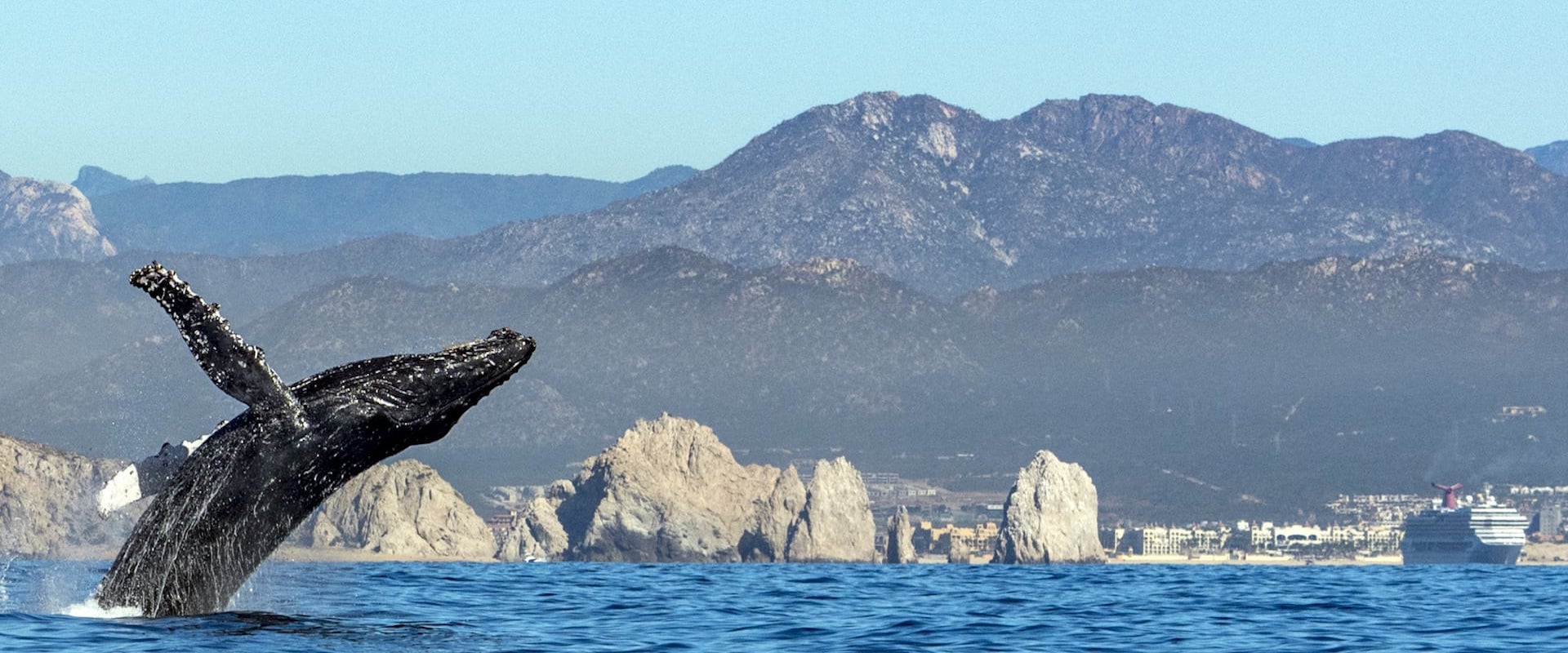Liveaboard Diving in Baja California
WHAT TO EXPECT ON A BAJA CALIFORNIA LIVEABOARD
Baja California Sur is a western state of Mexico. In its southern tip is where the dive areas are which the liveaboards depart and visit. Baja California is popular with the local Mexican population as well as with tourists from all around the world. They are attracted by the pearly white beaches, turquoise seas, and incredible diving sites. This is a year-round dive area which means there is always a flow of tourists.
BAJA CALIFORNIA UNDERWATER
There are multiple liveaboards that visit the dive sites in the South of Baja California and teach area has their own special gems that you will be able to see. There is an ancient reef in Cabo Pulmo Marine Park which attracts species from all walks of life, including smaller species such Angelfish, groupers, Mobula Rays, and the famous Panamic Green Eel, to the larger species such as Whale sharks in Autumn time, Humpback whales, Manta Rays, Dolphins, Grey Whales, Orcas and sharks in the winter time, as the amount of plankton in the water is at a high, which means less visibility but more whales.
Another popular attraction on liveaboards to this area are the sea lions, cheeky and curious they play with the divers and in the months of August and September is when the juveniles are around, which are even more playful! The flourishing reefs filled with sponges, sea fans, and soft and hard corals of all shapes and sizes and it inhabits many smaller creatures including many species of Nudibranchs which help make reef just that more colorful, sea horses, angelfish and much more.
BAJA CALIFORNIA DIVE SITES/AREAS
CABO PULMO MARINE PARK is located on the east coast of the Baja California, Cabo Pulmo is a protected marine park which hosts the oldest reef on the western coast of North America. This reef is around 20,000 years old, and the Mexican Government signed it a protected reef in 1995. Since then the biomass of the reef increased by 400 percent, making it the most successful Marine Park in the world, to date. It currently hosts over 6000 species of all shapes, sizes, and colors making it a true photographer's paradise.
LA PAZ is the capital city of the Baja California, it is a tranquil town and a perfect first destination to discover the beauty of the marine world of Mexico. Essentially it is the gateway into diving the Sea of Cortez. This area is known for the large pelagics which migrate past here with some of the most famous being the Whale Sharks and their juveniles and the extremely large schools of Hammerhead sharks. It is also known for the large Sea Lion colonies made up of curious and cheeky sea lions who love teasing divers.
SEA OF CORTEZ: sometimes also known as the Gulf of California stretches 1,200km (745mi) and is sheltered from the Pacific Ocean by the Baja California peninsula, is a gulf which has thousands of islands and pinnacles and calm waters; a paradise for divers. Unlike most of the other dive sites in this area of the Pacific Ocean, the reef here is flourishing and incredibly colorful. This results in a high diversity of smaller species, but have no fear, there are some large species spectacles as well. This is a popular diving area and even though there are possibilities for day trips when taking a liveaboard you avoid the business and you can reach more dive sites. The liveaboard season for this area is July to October.
Baja California liveaboards also depart for the famous Socorro Islands which are located to the South of Baja, only accessible via liveaboard. These islands are most famous for the schooling Hammerhead sharks & Giant Manta Rays that can be seen in this area.
TIPS FOR DIVERS
Baja California has dive sites of all different levels of difficulty due to currents and waves, however, each liveaboard has their own minimum dive experience level, please always check this before booking and it is important to remember your dive logs/logbooks. It is possible to rent equipment but it will be more comfortable to use your own gear, so if possible bring that with. With the large diversity of marine life, you will have the chance to see, it would be completely worth it to bring an underwater camera, to capture the memories.
The main language is Spanish, however, English is widely spoken all around the country and on the liveaboards. The currency is the Mexican Peso and you can easily exchange all popular currencies such as US dollars and Euros etc.
The plug is the same plug as the US; two flat prongs with the standard voltage being 127V. Please remember to bring an adaptor for all your electrics if you are not coming from the US.
HOW TO GET THERE
There are three ports from which the Mexican liveaboards that Liveaboard.com have to offer depart from, these are La Paz, Cabo San Lucas, and San Jose del Cabo. These are all cities in the state of Baja California and located in the most Southern municipality; Los Cabos in Mexico. The closest international airport to Cabo San Lucas and San Jose del Cabo Los Cabos International Airport, which has flights arriving from the United States, Canada, and other Mexican Cities.
La Paz is the capital city of Baja California and the port from which the liveaboards depart is called Marina Fonutar. The closest International airport is El Alto International airport, which has flights arriving from international destinations such as the United States, Peru, and other South American destinations, and from multiple domestic locations as well. The airport is located approximately 15km (8mi) from La Paz center.











